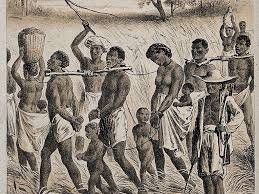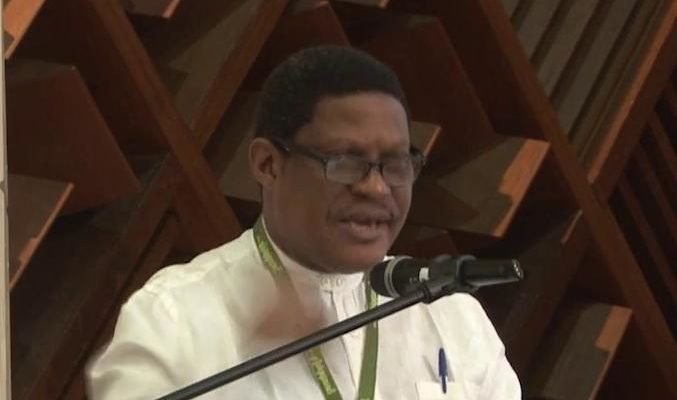African Complicity in the Slave Trades and Its Lingering Effects. PART 2

It is important to note that the locally brewed gin from the raffia palm juice, mostly known by such names as kaikai or ekpeteshi, did not predate the colonial era but rather arose out of scarcity of hot drinks during the Great Depression following which the importation of alcoholic beverages declined. In 1927, for instance, the Protectorate of Southern Nigeria imported 548,128 gallons of gin. By 1934 the figure had fallen to 59,312 gallons only; yet the local appetite for such hot drinks remained stable. This situation encouraged people to provide for the shortfall in supply from overseas.
Further, as Chima Korieh writes, the knowledge of distilling local gin is said to have been gained by one Nigerian “stowaway”, James Iso of Calabar, from his adventures in the United States, which included visits to the distilleries of American alcohol traffickers during the prohibition. Korieh also argues that colonial reports reveal that local distillation was generally unknown until about 1932; this is further buttressed by the fact that the Illicit Distillation Ordinance of the colonial government which prohibited the production of local gin (for economic reasons rather than the moral ones that were presented to the Nigerian public) was first applied in the conviction of some people in 1931 in the Calabar Province.
So, it was indeed the imported items of the slave trade era that became part of the “tradition and culture” of African communities; that became part of the fabric of African societies, weaved into our social life; so “ancient” and established that it seems a taboo to question them.
By incorporating these items of the slave trade into the religion and profound knowledge system of the people, the solemn ceremonies of the society and other aspects of life, the values that underpinned the slave trade were legitimized and prioritized in African communities and with these values the insensibilistic personality type that they encouraged.
For instance, young men we’re readily encouraged to go into slave raiding and trading in order to acquire the hot drinks – gin, schnapps, rum and others – and tobacco, which the elders and the community demanded of them. The rise of the sensuous-apathetic will and the rule of personality under the auspices of the circumstances of the slave trade are in part portrayed by Isichei’s account of robber barons in Igbo land:
“Alor, for instance, is a village group fifteen miles from Onitsha, which struggles with the problem of inadequate and eroding land. In pre-colonial times, its people eked out an income by wood carving, trading and palm-wine tapping. A section of the community, however, grew rich by trading in slaves. One of them, Okwunanne Udogu, progressed from slave trading to slave raiding, in alliance with an Aro man who arranged for the slaves’ transport from the area.”
Further, regarding a robber baron from Arondizuogu she writes:
“Nwankwo Okoro was the first son of Okoro Idozuka … At the age of 21 he joined his father on slave trade … He killed anybody who came across his way … He once said ‘I must visit any town that crosses my way and nothing will prevent me from attacking them with my great troops’ … By collecting slaves and war-captives he was able to build a very large family. When the British came they made him a Warrant Chief.”
It must be said, however, that these robber barons were robbers through and through in that they were completely extractive and destructive, adding no value to the economy unlike some of the capitalist robber barons of the West, say USA, who stole, exploited and defrauded people and institutions in the course of pursuing profit within the framework of their productive and value-adding businesses.
The emergence of this sort of slave trade entrepreneurs in the form of agents of a state, private or semi-private entrepreneurs, in the main, cannot be said to have been imposed on Africans (both coastal and inland states) by the gun-slave circle or the economic (and other) exigencies of the slave trade. It was the choice of both coastal and inland African states to so legitimize, sanctify, and unreservedly embrace the slave trade and the values that went with it. Of course, some African communities put up ideological resistance as I indicated earlier (and would shortly return to). Their efforts were however not sufficient to stem the haemorrhaging of Africa through the trans-continental slave trade routes.
In the end, very many millions of Africans were forcibly transported to the New World. With respect to the Igbo, the great pioneer of African historiography, Kenneth Onwuka Dike, and his collaborating assistant, the anthropologist Felicia Ekejiuba, a pioneer female African anthropologist, say that in the unrestricted period of slave trade prior to 1840, 16,000 Igbo slaves were annually shipped out of the port of Bonny. According to the estimates of the English slave ship captain, John Adams, who visited West Africa (mostly the Niger Delta region) ten times between 1786 and 1800,
“this single nation [the Igbo] has not exported a less number of its own people, during the last twenty years, than 320,000; and those of the same nation sold at New and Old Calabar, probably amounted in the same period of time to 50,000 more, making an aggregate amount of 370,000 Heebos.”
And, there were other ports that trafficked in Igbo slaves such as Nembe-Brass and Elem Kalabari in the eastern Niger Delta. On the western Niger Delta, traffickers used the port of Warri among others. One can see from this that the Igbo traffic in slaves from the 1500s to mid-1800s even after due consideration to the peak period 1730-1830 and the relatively smaller volume at the other ports compared with Bonny, most probably took away millions; some two million in a conservative estimate.
These Igbo victims came from all over Igbo land, especially with the organized slave trading of the Aro whose routes covered such slave-trading centres, among others, as Ibagwa, Nsukka, Nike, Udi and Amokwe in the north; Nkalagu and Abakaliki in the east; Aguleri, Nri, Awka, Nibo Ndiowu in the north-central area; Abo (a major slave emporium), Asaba and Onitsha on the River Niger; Owerri, Aba/Abayi, Ahoada and Akwete in the south; and Uburu and Bende/Uzuakoli major slave emporiums in south-east Igbo land.
Prof Joseph C. A. Agbakoba
To be continued….
![]()



